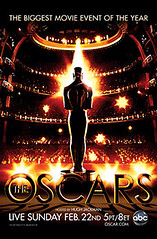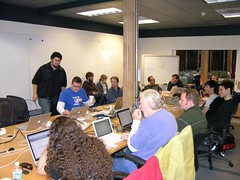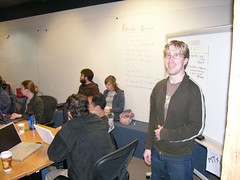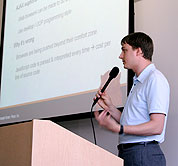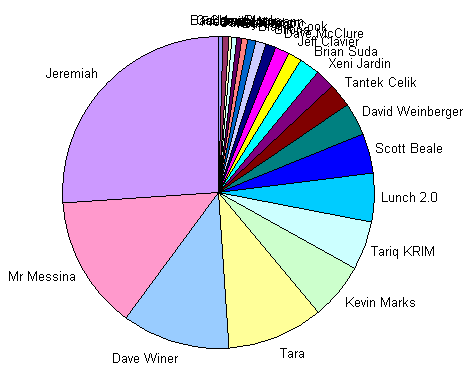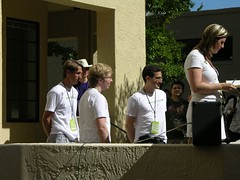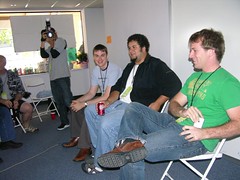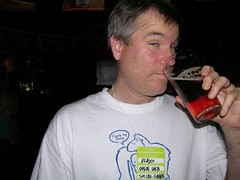Despite all the serious challenges the world is facing these days, I’m also seeing more and more that inspires me–cases where great things are happening to great people doing great work and improving the world in the process. Specifically, the following recent examples come to mind:
- Movies: Avatar
- Music: Lady Gaga
- TV: Netflix HD streaming to Blu-Ray/TiVo/Xbox/etc.
- Mobile: Palm Pre & Nexus One
- Desktop: Chrome OS
- Social: Foursquare
What do all of these have in common? They’re all cases of insanely talented outsiders changing the world by just working really hard and doing great stuff.
Everyone said James Cameron was crazy to make Avatar, just like they said he was crazy to make Titanic. They’re both such impossibly grand, expensive, and difficult visions to capture. But he did it anyway, and the work is brilliant, and the only thing that went broke were the previous box-office records.
Same thing with Lady Gaga: just two years ago, no one had heard of her, and she was just playing little clubs in New York. But using her incredible talent in song-writing and performance art, and a willingness to work insanely hard every day, she unleashed her strange and unique vision of music/fashion/art/performance and took the world by storm, becoming the first artist ever to score four #1 hits off her debut album, and at age 23 no less. If you haven’t paid close attention and think she’s just another made-to-order corporate pop starlet, take a closer look, you’ll be surprised (as I was).
Netflix is certainly an outsider when it comes to watching TV in your living room (it’s neither a cable provider nor a set-top box manufacturer), yet now that I can watch entire seasons of Lost in HD on my TV whenever I want–thanks to its Watch Instantly streaming and integrations with existing set-top boxes and gaming consoles–I find myself rarely watching “real TV” any more. And Netflix’s user experience is far superior–it knows which episodes I’ve already seen, so I can just pick up where I left off whenever I have a free moment. And if I’m up at Tahoe for the weekend, I can watch it there too on my laptop, and my episode history is kept in sync because it’s stored in the cloud. Brilliant.
Both Palm Pre and Android (hard to pick a favorite yet!) are up against fierce competition from Apple and the old-world mobile establishment, and neither company (Palm or Google) is an established player in this space, but they’re both producing excellent devices that simultaneously improve the quality of the experience for users while opening up more flexibility and power to developers. And they’re also making web development more of a “first-class citizen” for mobile apps. It’s hard to think of a more ambitious challenge than building your own mobile platform–hardware, OS, software stack, apps, and distribution in physical stores–but that’s not stopping these guys from having a major impact, and the game is just beginning.
Chrome OS isn’t even out yet really, but it’s already clear that the desktop will soon evolve to their vision where all important data lives in the cloud, and it will no longer matter if your computer dies or if you want to use multiple computers in different places–a pain that I’ve experienced many times, as I’m sure you have. Windows is one of the most well-established monopolies there is, so again it’s crazy in some sense to try and compete there, let alone with a radical new vision that does a lot *less* than the status quo, and instead re-imagines the problem in a new way. And yet people buy new computers all the time, so it’s not hard to believe that they could establish considerable market share in a short number of years, while forcing radical change from their competitors at the same time.
And perhaps closest to my own area of work on the Social Web, I think it’s noteworthy that the company that has had the biggest positive impact on how I connect and share with my friends in the last year is not any of the big established players, but a tiny startup that’s building itself up from scratch by making it easier and more rewarding to share where you are and what you’re doing: Foursquare. While I cringe at the amount of work they have to do to integrate with each separate social network and build apps for each separate mobile device (that’s why we need more common standards, of course!), they’re still able to deliver an awesome product with a tiny team, and their service is taking off like a rocket.
Why are these examples so inspiring to me? They provide reassurance that in 2010, two basic things are still true–perhaps more true than ever before:
- You *can* win by being excellent and working hard to build a better product
- You *can* win even if you’re an outsider in a field of powerful incumbents
It’s hard to believe in transformational innovation if you can’t believe in those two points, and it’s often easy to get discouraged, since these are such difficult challenges. But if those guys can all do it, so can we. In fact, it’s not hard to believe that it’s actually getting easier to succeed in these ways. After all, barriers to entry keep getting lowered, and the spread of information keeps getting faster and more efficient, so the good stuff should be able to be discovered and bubble to the top faster than ever before. If that’s true, then the new “hard problem” should be doing great work in the first place, and that’s the problem I want to be tackling!
What examples are inspiring you right now?
